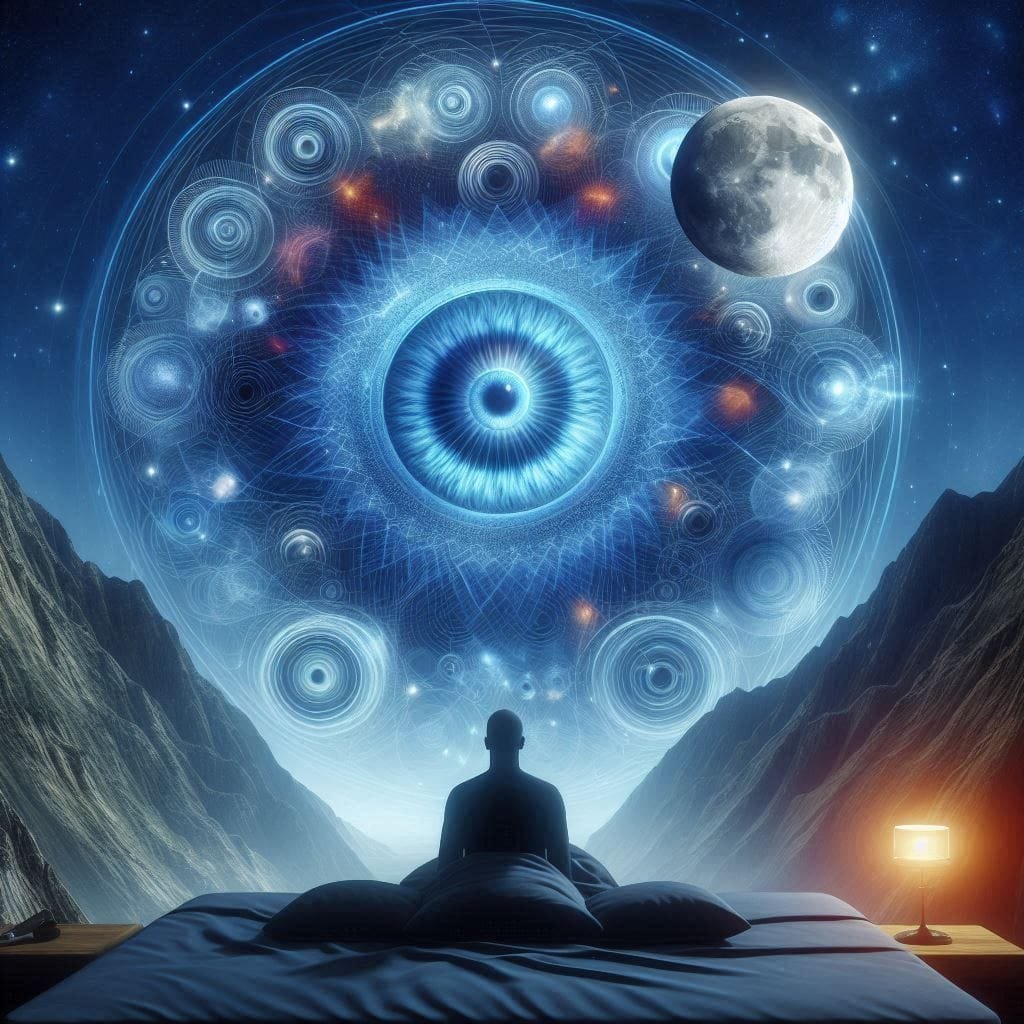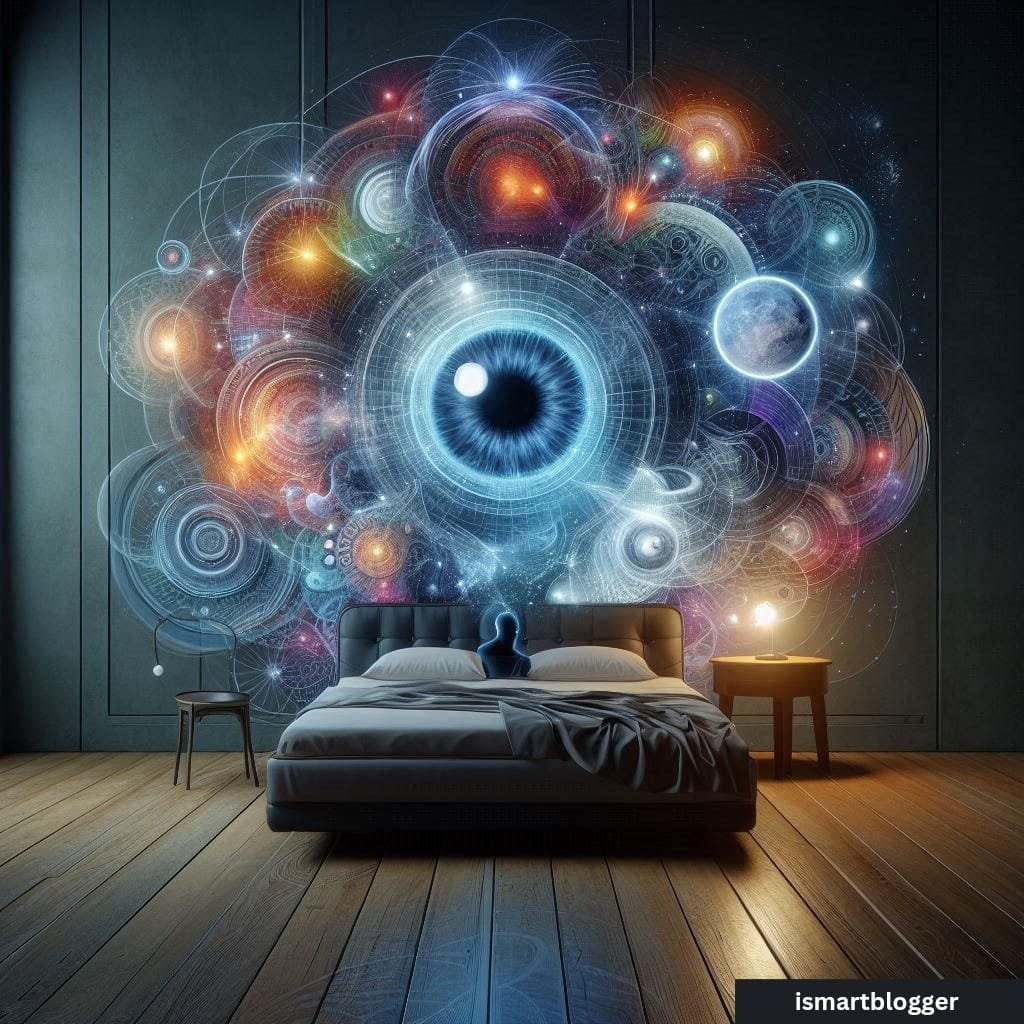Unlocking Insomnia Relief: The Power of Visualization & Imagery
Unleash the power of visualization and imagery for insomnia management. Enhance sleep, reduce stress, and achieve a blissful night’s rest.
The Power of Visualization and Imagery in Insomnia Management
Introduction
Insomnia, a sleep disorder characterized by difficulties falling asleep, staying asleep, or experiencing non-restorative sleep, has become increasingly prevalent in today’s society. The fast-paced nature of modern life, coupled with high levels of stress and technological advancements that contribute to constant stimulation, have contributed to the rise in insomnia cases.
According to recent studies, approximately 30% of adults experience symptoms of insomnia at some point in their lives. The consequences of untreated insomnia go far beyond mere restlessness or daytime fatigue.
Lack of quality sleep can significantly impact one’s physical health, cognitive function, and overall well-being. Chronic insomnia has been linked to an increased risk of developing various medical conditions such as cardiovascular diseases, obesity, diabetes, and mental health disorders like anxiety and depression.
To mitigate the negative effects associated with insomnia and improve one’s overall sleep quality and quantity, it is crucial to implement effective strategies for managing this sleep disorder. While pharmaceutical interventions exist for treating chronic insomnia cases under medical supervision when necessary, non-pharmacological approaches are becoming increasingly popular due to their long-term benefits without potential side effects.

Definition of Insomnia and its Prevalence in Today’s Society
Insomnia is a clinical condition characterized by persistent difficulty initiating or maintaining sleep that occurs despite adequate opportunity and circumstances for sleep. It often goes hand-in-hand with subjective complaints such as dissatisfaction with the quality or duration of sleep. In today’s society where stress levels are high and work demands are relentless, it is no surprise that insomnia has become a widespread issue.
The prevalence rates vary depending on age groups but remain significant across all stages of life. Research indicates that approximately 10-30% of the general adult population experiences insomnia symptoms, with higher rates among older adults and females.
The Importance of Effective Insomnia Management
Effective management of insomnia is crucial to maintain overall health and well-being. Sleep plays a vital role in various physiological processes, including restoration of the body and mind.
Insufficient or poor-quality sleep can lead to a myriad of negative consequences such as impaired cognitive function, mood disturbances, decreased productivity, compromised immune function, and an increased risk of accidents. Moreover, chronic insomnia has been linked to the development and exacerbation of numerous physical and mental health conditions.
It is important to recognize that insomnia is not merely a symptom but rather a chronic disorder that requires specialized attention and management strategies tailored to individual needs. By implementing effective techniques such as visualization and imagery, individuals suffering from insomnia can enhance their sleep quality, mitigate the impact of stress on sleep patterns, and ultimately improve their overall quality of life.
Understanding Visualization and Imagery
Unlocking the Power of Mental Imagery: Exploring Visualization
Visualization, often regarded as a cornerstone of imagery-based practices, is a powerful mental technique that enables individuals to create vivid mental images within their minds. It involves harnessing the imaginative faculties to generate detailed scenes or scenarios that evoke sensory experiences. When it comes to managing insomnia, visualization acts as a gateway to calmness and relaxation, allowing individuals to redirect their thoughts and focus on positive mental representations.
Through visualization, one can conjure up serene landscapes, tranquil settings, or even recreate cherished memories with astonishing clarity. The mind becomes an artist’s canvas where sleep-promoting visuals are skillfully crafted.
By picturing oneself nestled in a cozy cottage by the seashore or strolling through a lush garden bathed in moonlight, one taps into the power of imagination and nurtures a sense of serenity conducive to sound sleep. Moreover, visualizations can be tailored to suit individual preferences and needs.
Some find solace in picturing themselves floating weightlessly among the stars while others may prefer envisioning an idyllic mountain retreat embraced by nature’s embrace. The key lies in creating mental images that resonate personally and instill feelings of tranquility and contentment.
The Artistry of Mental Experiences: An Overview of Imagery
Imagery represents an intricate cognitive process that extends beyond solely visual stimuli. Rather than focusing solely on sight, it embraces all senses – sight, sound, touch, taste, and even smell – to create immersive mental experiences. In the context of insomnia management, imagery allows individuals to construct multi-dimensional scenarios that transport them away from daily stressors into realms conducive for sleep.
When engaging in imagery-based practices for better sleep quality, one must harness all available senses harmoniously. By conjuring up not only visually captivating images but also integrating sounds, textures, tastes, and scents into their mental landscapes, individuals can create holistic experiences that promote deep relaxation.
The crackling of a comforting fireplace, the gentle touch of a soft breeze on the skin, the taste of warm herbal tea – these sensory details enrich the imagery and enhance its effectiveness. Imagery serves as a potent tool for transforming the mind’s landscape into an oasis of tranquility.
It allows individuals to tap into their innate capacity for creativity and imagination to cultivate soothing mental environments conducive to sleep. By embracing imagery’s multifaceted nature and embracing all senses in crafting mental experiences, one unlocks endless possibilities for promoting restful slumber.
Overall, understanding visualization as a technique for creating vivid mental images and appreciating imagery as a cognitive process that engages all senses empowers individuals in their quest for restful sleep. By harnessing the power of visualization to conjure up calming scenes tailored to personal preferences and skillfully utilizing sensory-rich imagery, insomnia management becomes attainable through self-guided mental journeys.
The Science Behind Visualization and Imagery in Insomnia Management
How the Brain Processes Visual Information and its Impact on Sleep Patterns
When it comes to understanding the science behind visualization and imagery in insomnia management, it is essential to explore how the brain processes visual information and its direct influence on sleep patterns. The brain has a complex network of neurons that are responsible for processing visual stimuli and translating them into meaningful experiences. Research suggests that the visual cortex, located at the back of the brain, plays a crucial role in processing visual information during wakefulness as well as during sleep.
During sleep, particularly during REM (rapid eye movement) sleep, which is when most dreaming occurs, the brain continues to process visual information. This process is known as dreaming sleep or paradoxical sleep because it is characterized by vivid dream images.
These dream images are formed through a complex interplay between various neural structures involved in memory consolidation and emotional processing. Therefore, utilizing visualization techniques before bedtime can tap into this natural ability of the brain to process visual information and promote more restful sleep.
The Role of Imagery in Activating the Relaxation Response and Reducing Stress Levels
Imagery has long been recognized for its ability to activate the relaxation response within our bodies, subsequently reducing stress levels. The relaxation response refers to a state of deep relaxation where heart rate decreases, blood pressure lowers, muscles relax, breathing becomes slower and deeper, and overall physiological arousal diminishes.
This activation of the relaxation response counteracts stress-induced physiological changes that can contribute to insomnia. Imagery works by engaging multiple sensory modalities simultaneously – sight, sound, smell, taste, touch – to create mental experiences that evoke feelings of calmness and tranquility.
By consciously directing our attention towards positive mental images during visualization exercises or guided imagery sessions before bedtime, we stimulate neural pathways associated with relaxation responses. This process promotes a shift from the sympathetic nervous system’s fight-or-flight response to the parasympathetic nervous system’s rest-and-digest mode, facilitating better sleep quality and duration.
Moreover, imagery can also help individuals break free from negative thought patterns and anxious rumination that may keep them awake at night. By creating positive mental scenes or engaging in guided imagery exercises focused on serene landscapes, peaceful scenarios, or pleasant memories, individuals can redirect their attention away from worrisome thoughts and foster a sense of calmness conducive to falling asleep faster and maintaining sleep throughout the night.
Understanding the science behind visualization and imagery in insomnia management provides valuable insights into how these techniques impact sleep patterns. The brain’s ability to process visual information during wakefulness and sleep allows us to harness this power through visualization practices before bedtime.
Additionally, utilizing imagery techniques activates the relaxation response systems within our bodies, reducing stress levels and promoting a state of tranquility that facilitates better sleep. By incorporating these methods into insomnia management strategies, individuals can enhance their overall sleep experience and improve their quality of life.
Promotion of Relaxation and Calmness Before Bedtime
Visualization techniques have proven to be a powerful tool in inducing a state of relaxation before bedtime, helping individuals with insomnia manage and alleviate sleep difficulties. The process involves using the power of imagination to create mental images that invoke feelings of tranquility and peacefulness.
By engaging in visualization exercises, one can effectively shift their focus away from daily stressors and promote a sense of calmness conducive to better sleep. The underlying principle behind visualization’s ability to induce relaxation lies in its impact on the autonomic nervous system.
When we visualize calming scenes or scenarios, our bodies respond by activating the parasympathetic nervous system, which is responsible for promoting relaxation and reducing stress levels. This activation leads to a decrease in heart rate, blood pressure, and muscle tension – all essential factors for achieving a deep state of relaxation.
Specific visualizations can be employed as part of an insomnia management routine. For instance, one widely used technique is called “progressive muscle relaxation.” In this exercise, individuals imagine themselves progressively relaxing each muscle group in their body from head to toe.
They may start by envisioning their facial muscles loosening, followed by their shoulders dropping and arms becoming heavy with relaxation. This detailed focus on different parts of the body helps redirect attention away from racing thoughts or worries that often contribute to insomnia.
Examples of Specific Visualizations
– Beach Sunset: Picture yourself standing on a beautiful sandy beach as the sun slowly sets on the horizon. Visualize the vivid colors painting the sky with hues of orange, pink, and purple. Feel the gentle breeze against your skin as you listen to the soothing sound of ocean waves crashing nearby.
As you immerse yourself in this serene environment through visualization, let go of any lingering tension or worries that might hinder your ability to unwind before bed. – Forest Retreat: Imagine walking through a peaceful forest filled with tall trees and lush greenery.
As you take each step, feel the softness of the moss-covered ground beneath your feet. Inhale deeply and savor the fresh scent of pine needles.
Birdsong fills the air, creating a symphony of nature’s melodies. Allow this visualization to transport you to a tranquil realm where stress dissipates, leaving room for relaxation and preparation for a restful night’s sleep.
Enhancement of Sleep Quality and Duration
Imagery techniques not only promote relaxation but also play an essential role in improving sleep quality and duration by establishing positive associations with bedtime routines. By engaging in guided imagery exercises specifically designed for better sleep, individuals can create mental experiences that positively impact their subconscious mind, paving the way for more restorative slumber. Bedtime routines are crucial for signaling the brain that it’s time to wind down and prepare for sleep.
Incorporating imagery into these routines helps to reinforce these signals by associating specific mental visuals with relaxation and ease into sleep. For instance, envisioning oneself lying comfortably in bed under a cozy blanket while surrounded by soft candlelight can help create an atmosphere conducive to deep rest.
Another effective technique is called “dream rehearsal.” Before falling asleep, individuals can visualize themselves engaging in pleasant dream scenarios where they experience feelings of joy or contentment. By cultivating positive emotions through guided imagery before sleep, one enhances their chances of experiencing more fulfilling dreams during the night.
Exploration of Guided Imagery Techniques
Guided imagery exercises offer structured visualizations designed to promote better sleep. These techniques involve listening to pre-recorded audio tracks or following written scripts that guide individuals through vivid imaginary scenarios specifically tailored for insomnia management.
One widely used technique is known as “the waterfall meditation.” During this exercise, individuals imagine standing beneath a gentle waterfall while feeling its refreshing droplets cascading down upon them. As they visualize the water washing away any stress or tension, a deep sense of relaxation envelops them, preparing their mind and body for a restful night’s sleep.
Another popular technique is called “the peaceful garden.” In this visualization, individuals create an imaginary garden filled with their favorite flowers, soothing scents, and soft colors. They can imagine walking through this tranquil haven, absorbing its beauty and serenity.
As they mentally explore the garden, their minds become more serene and receptive to sleep. By incorporating these guided imagery techniques into their insomnia management strategies, individuals can harness the power of visualization to improve both the quality and duration of their sleep.
Practical Applications: Incorporating Visualization and Imagery into Insomnia Management Strategies
Creating a Personalized Visualization Routine
Incorporating visualization and imagery into one’s insomnia management strategies can be highly effective, but it is crucial to develop a personalized routine that suits individual preferences. The key is to identify what triggers relaxation and calmness for each person. Some individuals may find solace in visualizing serene natural landscapes, while others may resonate with images of cozy interiors or comforting memories.
By understanding personal preferences, one can tailor the visualization routine accordingly. To develop tailored visualizations, it is important to create vivid mental images that evoke a sense of tranquility and peace.
Start by finding a quiet space where distractions are minimal. Close your eyes and focus on deep breathing to relax your mind and body.
Then, begin to visualize a scene or scenario that resonates with you personally. It could be imagining yourself lying on a beach listening to the sound of waves crashing gently, or envisioning yourself in a peaceful garden surrounded by blooming flowers.
Guidance on Incorporating Sensory Details
To enhance the effectiveness of visualization exercises in managing insomnia, incorporating sensory details is crucial. Our senses have a remarkable ability to evoke emotions and trigger relaxation responses within our bodies.
To do this, try integrating various sensory cues into your visualization practice. One approach is to consider scents that are associated with tranquility or relaxation for you personally – such as lavender or chamomile – during your visualization session.
You can use essential oils or scented candles as part of the experience, allowing their soothing aromas to further deepen your state of relaxation. Additionally, incorporating sounds into your visualization routine can be beneficial in creating an immersive experience.
You may choose soft instrumental music or nature sounds like raindrops falling on leaves or birds chirping softly in the distance. The combination of sensory cues, such as scents and sounds, with visualization can significantly enhance the effectiveness of the practice.
Visualization Exercises for Insomnia-related Challenges
Addressing racing thoughts or anxiety through guided imagery can be particularly helpful for those struggling with insomnia. During moments when thoughts are overwhelming, try picturing a serene lake surrounded by lush greenery.
Visualize each racing thought transforming into a leaf gently floating on the water’s surface and drifting away. As the leaves disappear, allow your mind to become calm and clear, inviting sleep to take over.
For individuals experiencing physical discomfort or pain that disrupts sleep, specific visualizations can aid in overcoming these obstacles. Picture yourself lying comfortably in a cozy bed, bathed in warm golden light.
As you inhale deeply, imagine warmth gradually spreading throughout your body, soothing any areas of pain or discomfort. With each exhale, envision tension leaving your body and being replaced by tranquility that allows for restful sleep.
By incorporating personalized visualization routines into insomnia management strategies and utilizing sensory details within these exercises, individuals can effectively address challenges associated with racing thoughts, anxiety, physical discomfort or pain. These techniques offer an insightful gateway to better sleep and improved overall well-being.
The Role of Professional Guidance in Utilizing Visualization and Imagery for Insomnia Management
Working with a Sleep Specialist
Seeking professional guidance from a sleep specialist can greatly enhance the effectiveness of utilizing visualization and imagery for insomnia management. Sleep specialists, such as sleep psychologists or therapists, are trained to provide tailored strategies and interventions for individuals struggling with sleep disorders.
When it comes to incorporating visualization and imagery techniques into your insomnia management plan, a sleep specialist can offer expert advice and personalized guidance. A sleep specialist will assess your specific needs, evaluate the underlying causes of your insomnia, and help you create an individualized treatment plan.
They may suggest specific visualizations or imagery exercises that align with your preferences, goals, and challenges. Furthermore, they can help monitor your progress over time and make any necessary adjustments to ensure optimal results.
Collaborating with a Mental Health Professional
Collaborating with a mental health professional can also be invaluable when utilizing visualization and imagery techniques for insomnia management. Insomnia often has links to mental health conditions like anxiety or depression.
Addressing these underlying issues is crucial in successfully managing insomnia. A mental health professional can work in tandem with a sleep specialist to provide comprehensive care.
They can assist in identifying any emotional or psychological factors contributing to your insomnia and employ therapeutic techniques alongside visualization exercises. By addressing the root causes of your sleep disturbances through counseling or therapy sessions, you can experience improved overall well-being while concurrently working on better sleep habits through visualization.
Conclusion
Incorporating visualization and imagery into insomnia management strategies holds tremendous potential for improving both the quantity and quality of your sleep. Seeking professional guidance from experts such as sleep specialists or mental health professionals who specialize in treating insomnia is highly recommended.
By working collaboratively with these professionals, you can develop personalized plans that harness the power of visualization techniques tailored to your unique needs and challenges. Remember, with professional guidance, you can take an active role in managing your insomnia and reclaiming restful nights. Embrace the transformative potential of visualization and imagery, allowing yourself to envision a future filled with rejuvenating sleep and waking up refreshed each morning. A good night’s sleep is not unattainable – it awaits those who dare to embark on this journey of self-discovery and healing through visualization.





